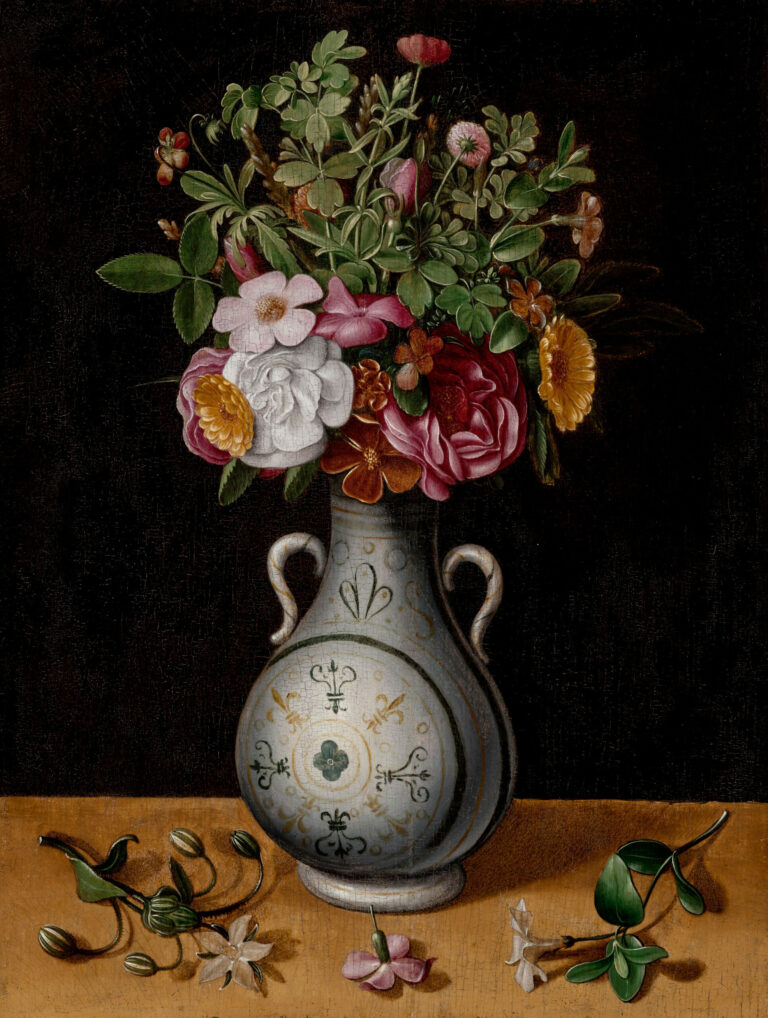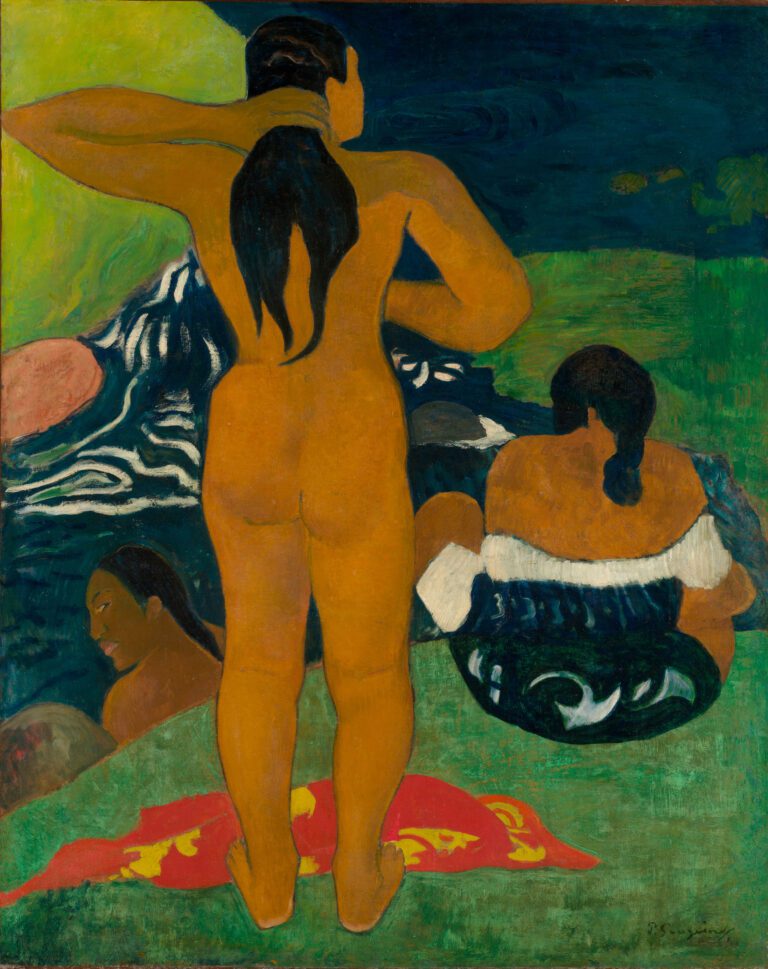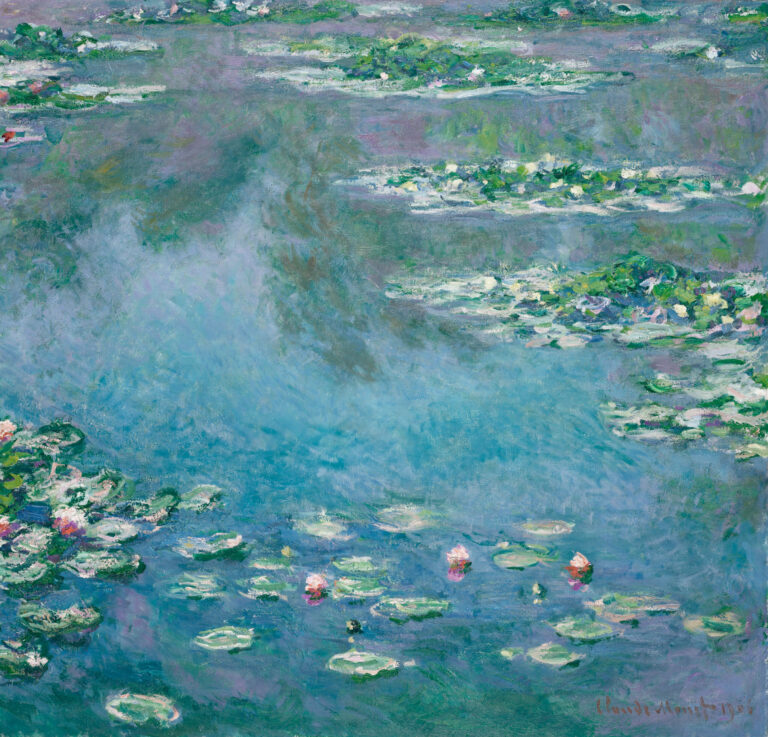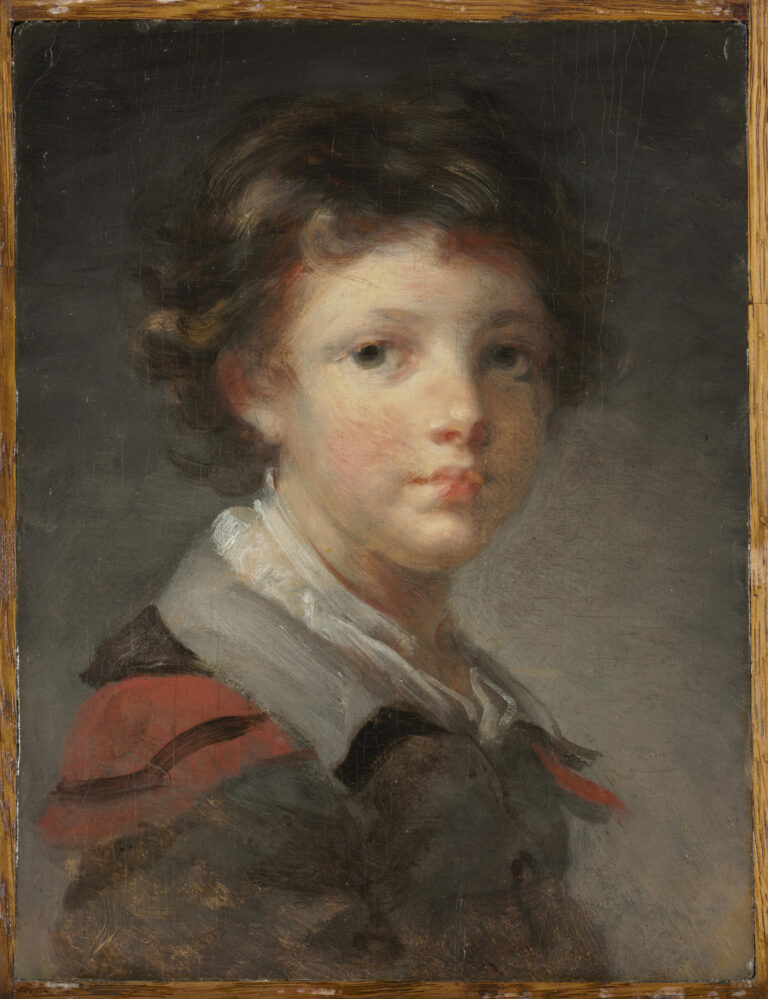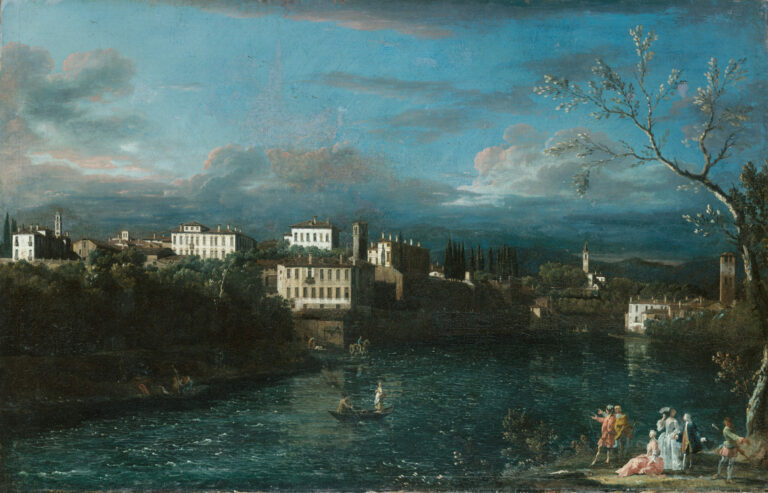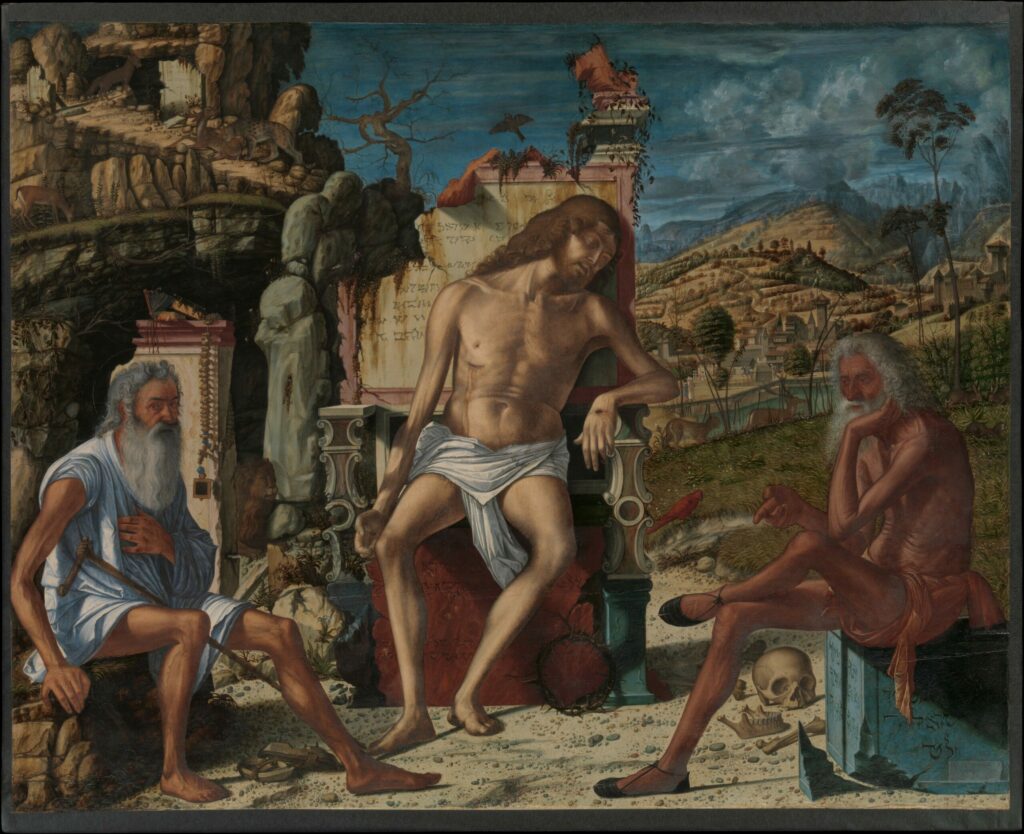
In this magisterial composition, Carpaccio presents a profound meditation on Christ’s Passion, orchestrated with remarkable symbolic complexity.
At the center, the suffering Christ, depicted in a moment of sublime vulnerability, rests on a dilapidated throne—a poignant symbol of the transition between his divine glory and earthly sacrifice. The painting is admirably framed by two major biblical figures: on the left, Saint Jerome, dressed in blue, embodying contemplative wisdom; and on the right, Job, figure of patience and unwavering faith. The artist demonstrates exceptional mastery of landscape, creating a striking contrast between arid rocks on the left and verdant hills on the right—a visual metaphor for the passage from death to resurrection. The precision of details, chromatic richness, and compositional sophistication testify to exceptional technical virtuosity, characteristic of the Venetian school.
Additional Information
- Meditation on the Passion by Vittore Carpaccio, c. 1480-1510
- Overall 27 3/4 x 34 1/8in. (70.5 x 86.7cm)
- The Metropolitan Museum of Art, Fifth Avenue, New York, Gallery 606
- https://www.metmuseum.org/art/collection/search/435851
Vittore Carpaccio (c. 1465-1525/1526) is one of the undisputed masters of the Venetian Renaissance, recognized for his unique ability to merge pictorial narrative with religious symbolism. His style is distinguished by meticulous attention to detail, exceptional mastery of perspective, and remarkable capacity to create contemplative atmospheres.
Although primarily famous for his grand narrative cycles commissioned by Venetian confraternities, devotional works like this one reveal theological depth and artistic sensitivity that place him among the most sophisticated painters of his era.

